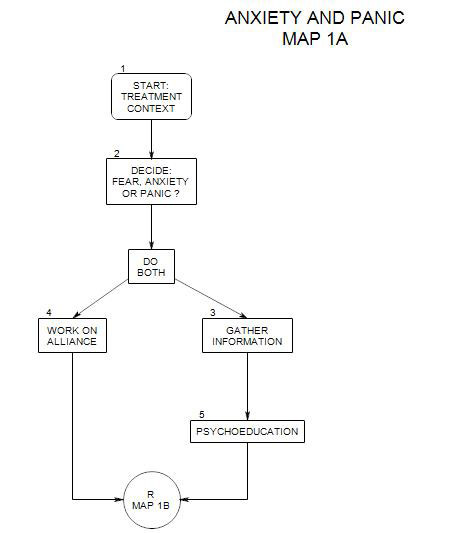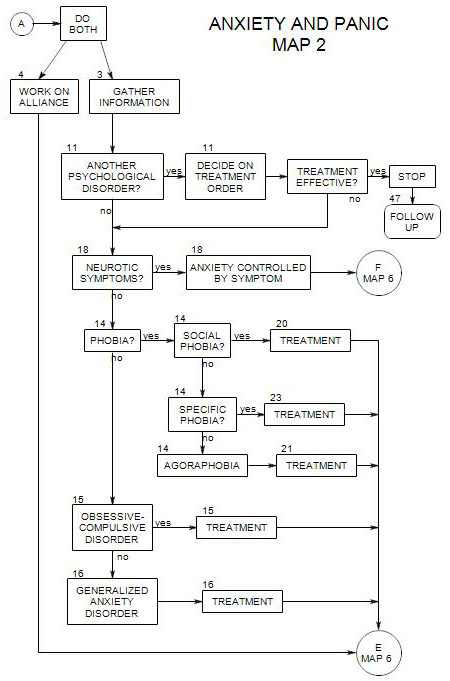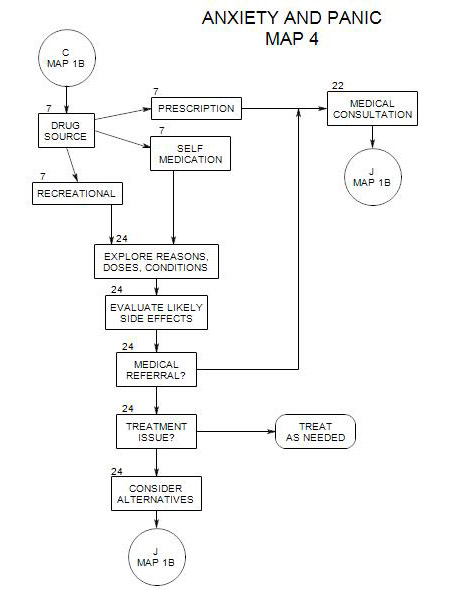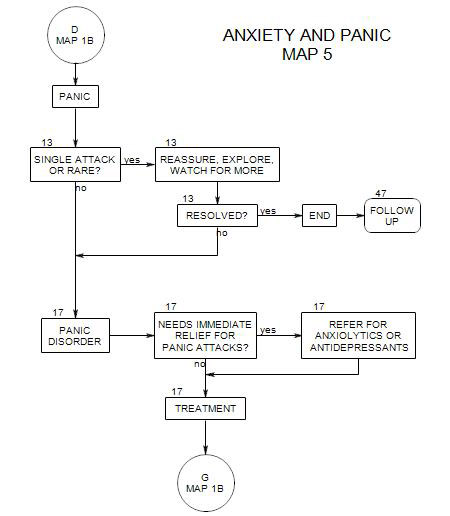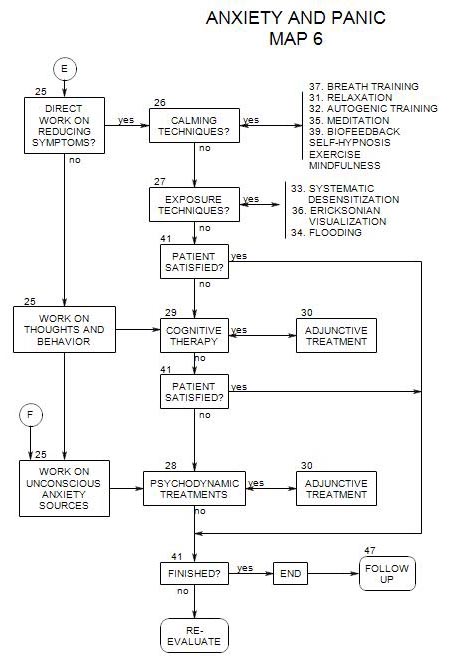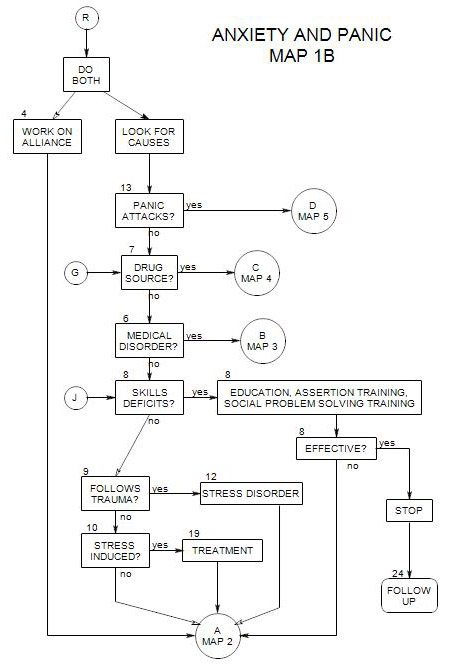
SECTIONS: 4 | 6 | 7 | 8 | 9 | 10 | 12 | 13 | 19 | 24
-
Follows Section 26 on Map 6
Autogenic training can be thought of as a method of self-regulation of the autonomic nervous system. Most often it is used as a method of relaxation. [Linden and Lenz, 118]It is not recommended as a sole treatment for anxiety disorders. However, it can be beneficial as an adjunct to other treatments, especially relative to interpretation of body sensations, management of worrisome thoughts, uncovering latent issues, etc. [Linden and Lenz, 140]Autogenic training can also help a person recover more quickly from anxiety. [Linden and Lenz, 142]
32a. Theory
Anxiety is accompanied by an imbalance between the sympathetic and parasympathetic nervous systems. When the individual brings the sympathetic system under control, homeostatic balance returns naturally. Linden and Lenz, 120]
32b. Technique
Patients learn six different phrases to say subvocally. Each phrase targets a different function of the sympathetic nervous system: [Linden and Lenz, 118]
- muscle relaxation.
- vascular control.
- heart function.
- regulation of breathing.
- regulation of visceral organs.
- regulation of blood flow in the head.
Imagery exercises involving these six functions lead to physiological changes, increased physiological self-control and a consequent reduction in the person’s stress level. [Linden and Lenz, 119-120]
Emphasis is on learning the techniques, rather than on the outcome of reduced anxiety [Linden and Lenz, 122]
The technique is essentially passive; according to Linden and Lenz [130, 134], attempts at more active control of the sympathetic nervous system will be ineffective.
32c. Risks
Patients may on occasion experience sudden levels of high anxiety or panic with any relaxation technique. This is a reason for careful preparation before using the technique, and for not using it as the only treatment method for a patient. [Linden and Lenz, 135]
On the other hand, it may be of value to include it with other therapies that explore the material it brings to light.
Reference:
Linden and Lenz, 1997
